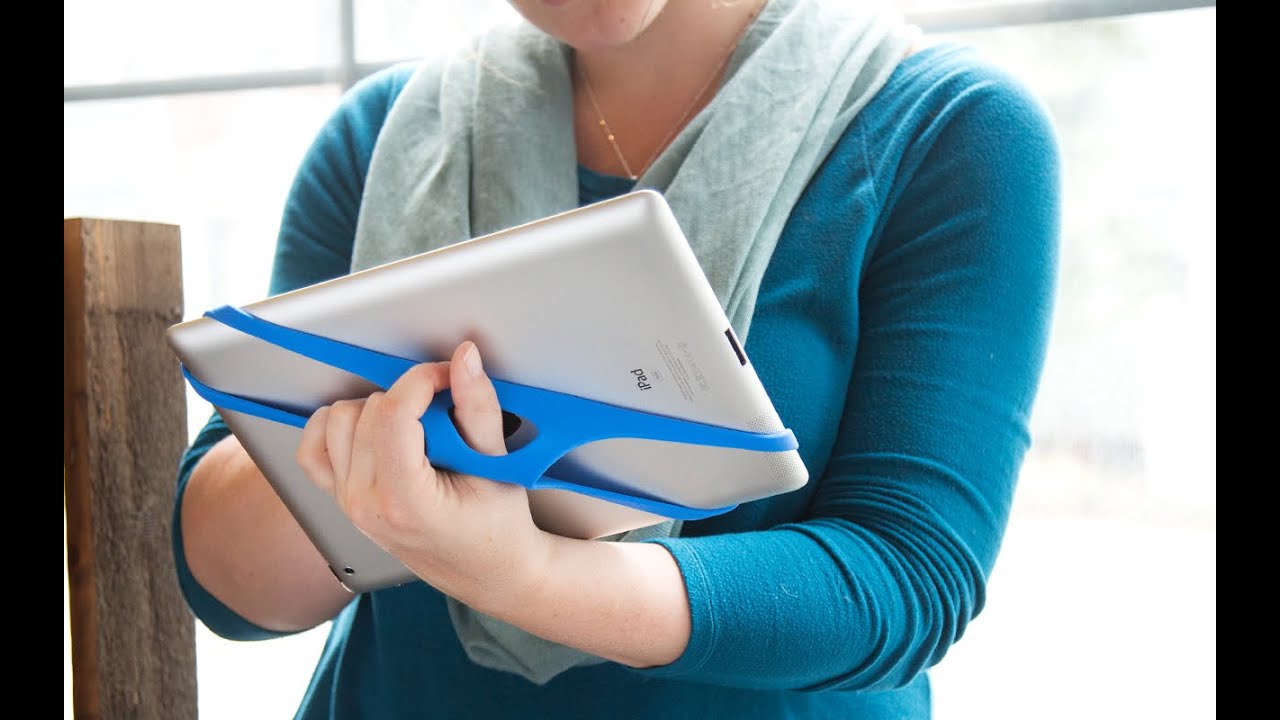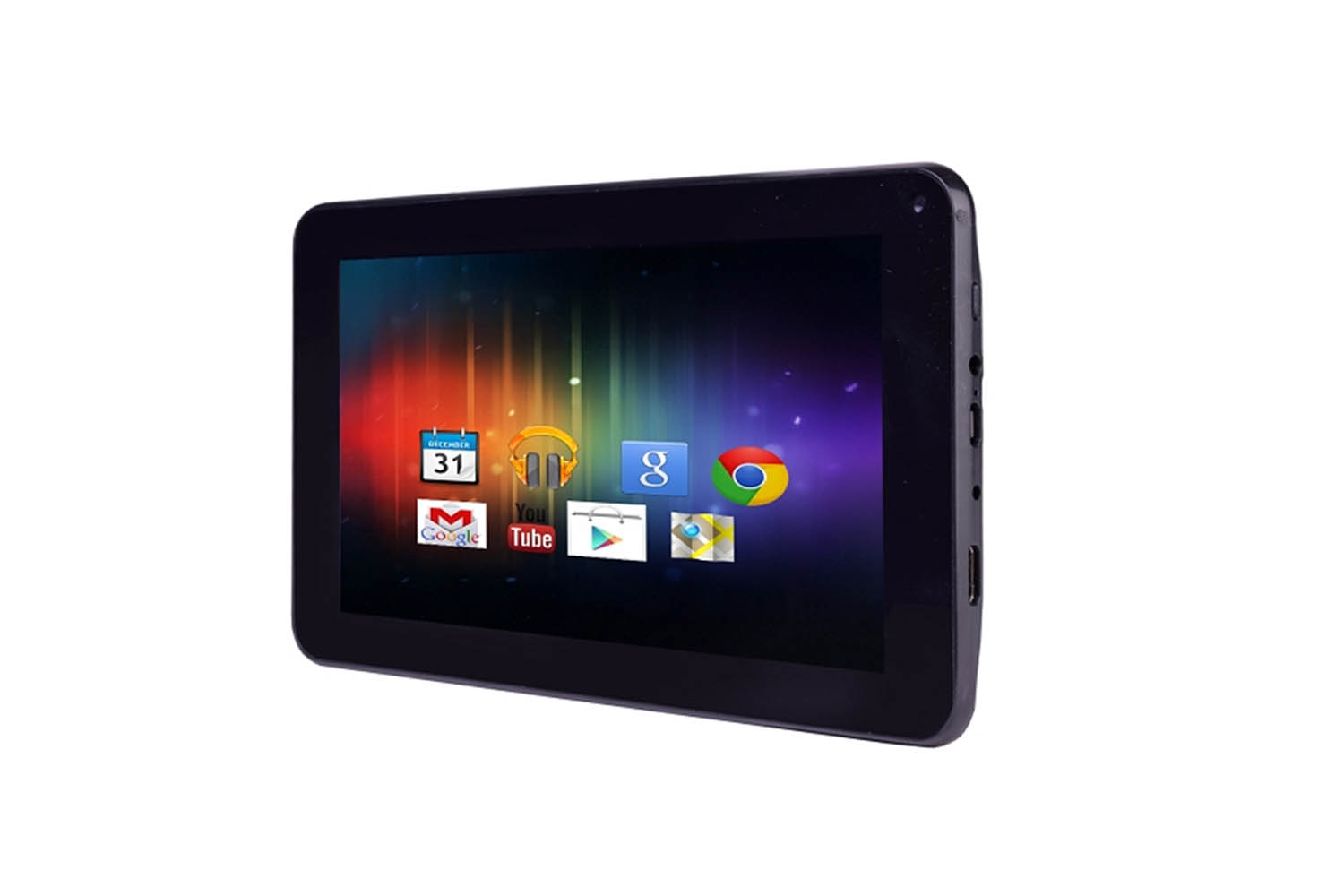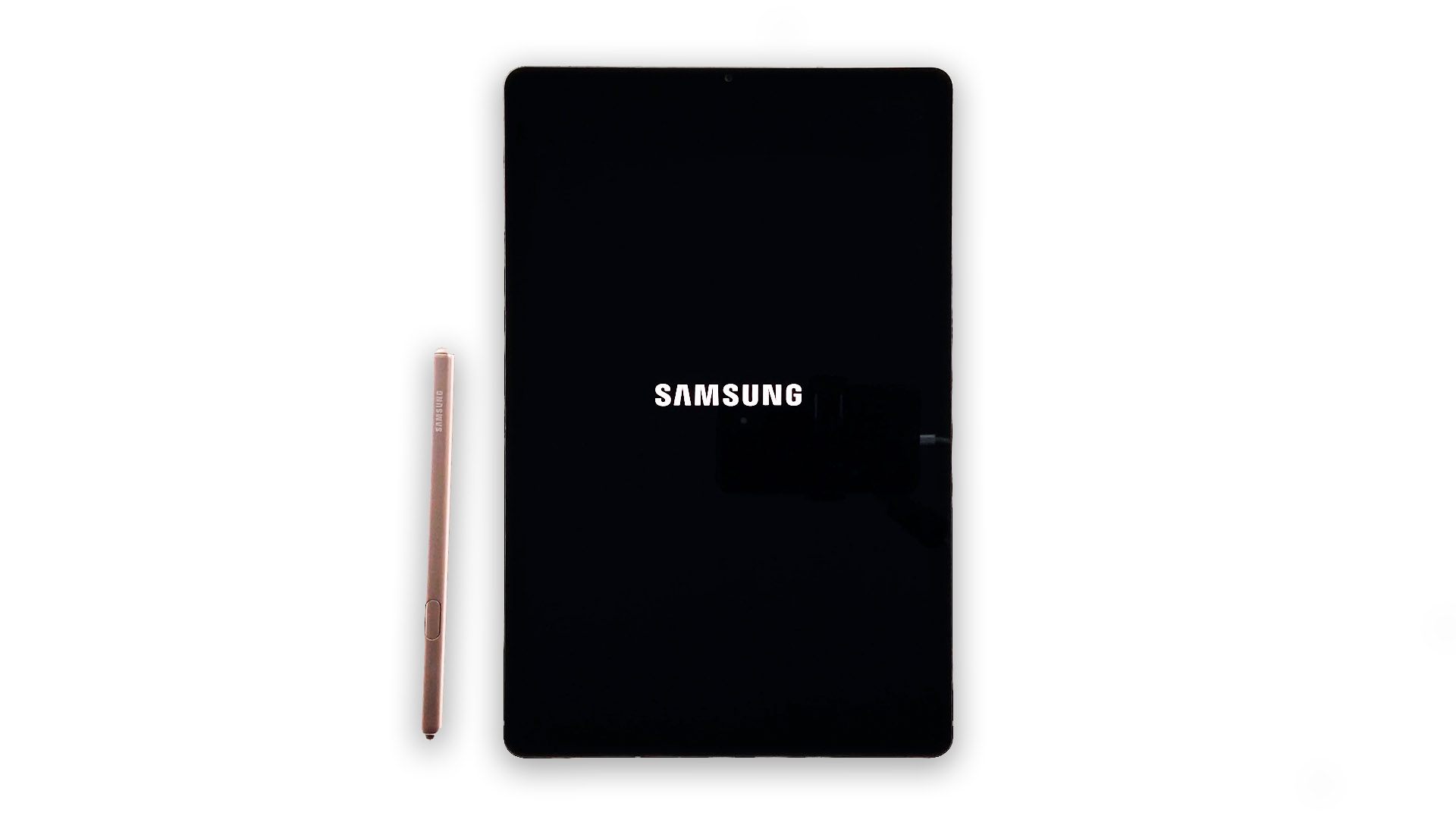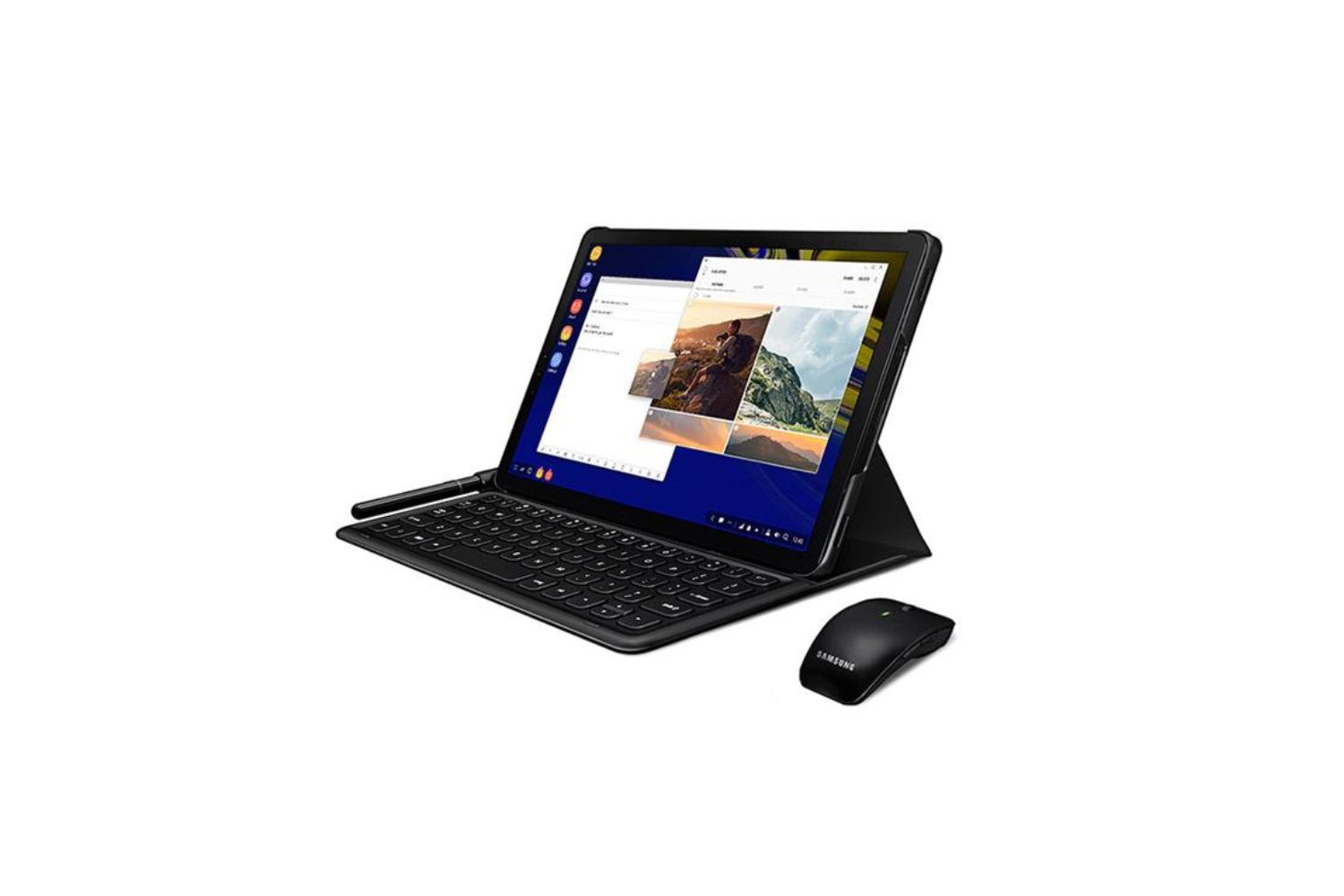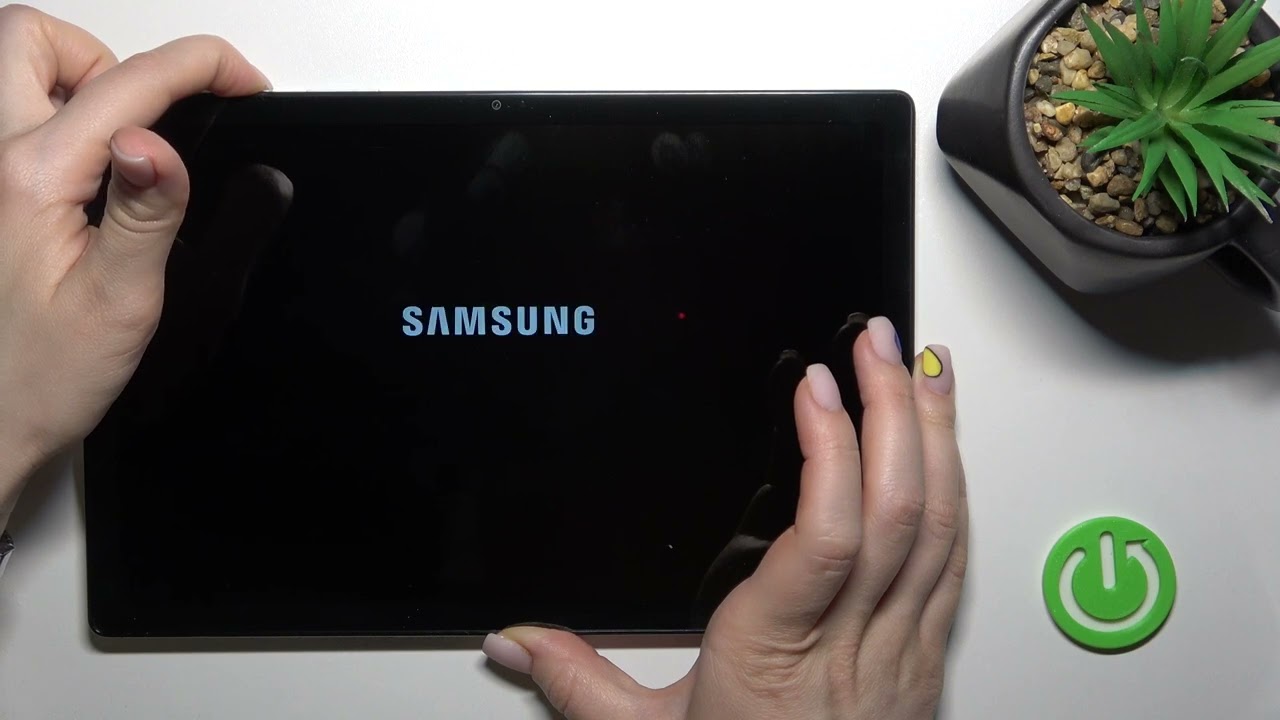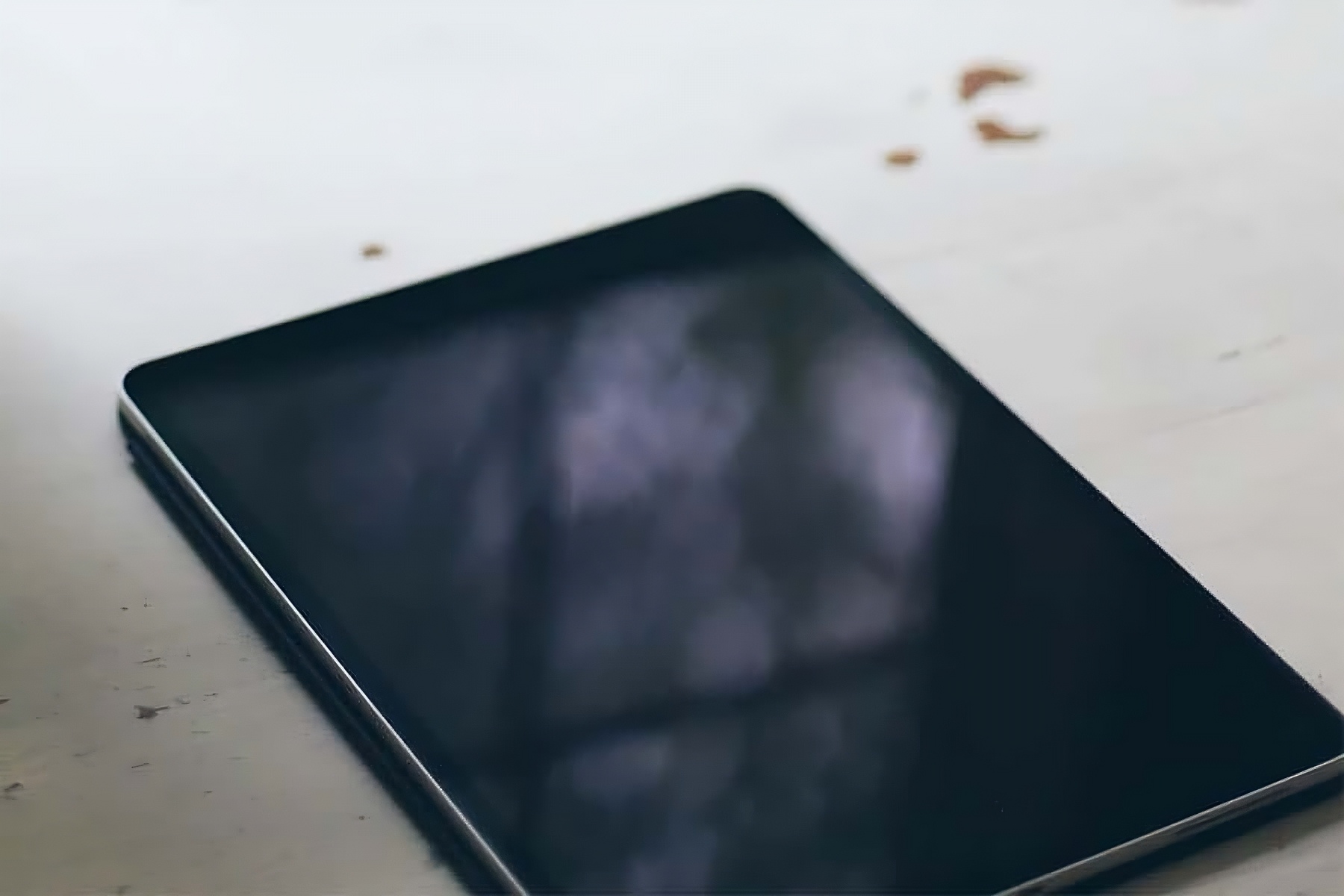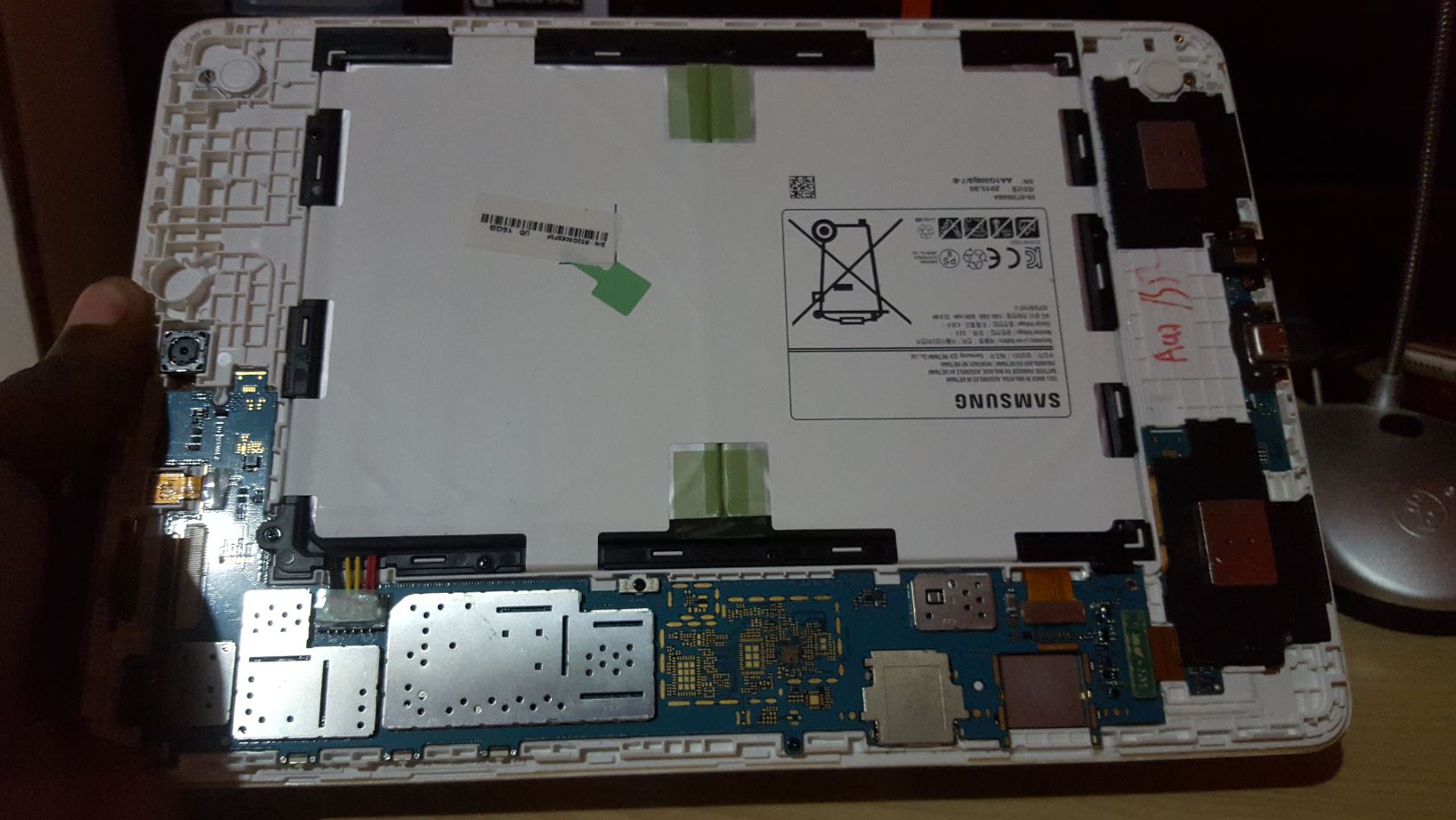Introduction
Welcome to the digital age, where tablets have become an integral part of our daily lives. These sleek and portable devices have revolutionized the way we consume and interact with information, whether it’s for work, entertainment, or education. However, amidst all the excitement and convenience, it is crucial to understand the importance of holding a tablet properly. The way we hold our tablets not only affects our comfort but also impacts our posture and overall wellbeing.
In this article, we will delve into the various aspects of holding a tablet and provide you with practical tips and techniques to ensure a comfortable and ergonomic experience. Whether you are a casual user or someone who spends hours on your tablet, understanding the significance of proper tablet holding techniques can make a world of difference.
By holding your tablet correctly, you can prevent discomfort and strain in your wrists, fingers, and arms. Moreover, it can reduce the risk of developing musculoskeletal disorders or repetitive strain injuries. So, let’s dive in and explore the world of tablet holding methods that will enhance your experience and prioritize your physical health.
Understanding the Importance of Proper Tablet Holding
Proper tablet holding goes beyond mere convenience; it is crucial for maintaining good posture, preventing muscle strain, and ensuring a comfortable user experience. Holding a tablet incorrectly can lead to a range of issues, from discomfort and pain to long-term health problems.
One of the main reasons why proper tablet holding is essential is the impact it has on our wrists and fingers. When we hold a tablet for extended periods, our hands and fingers can become fatigued, resulting in discomfort and decreased productivity. Moreover, repetitive finger movements, such as typing or swiping, can strain the tendons and muscles in our hands, leading to conditions like carpal tunnel syndrome.
Additionally, incorrect tablet holding can also cause strain on our arms, shoulders, and neck. Over time, this can result in muscle imbalances, alignment issues, and even chronic pain. Maintaining a neutral and relaxed posture when holding a tablet is crucial to prevent these problems.
Another aspect to consider is the impact on our visual health. Holding a tablet too close to our eyes or at an awkward angle can strain our eyes and potentially lead to eye fatigue, headaches, and even vision problems in the long run. Positioning and angling the tablet correctly can minimize eye strain and ensure optimal visual comfort.
Furthermore, proper tablet holding allows us to interact with the device more efficiently. When we hold the tablet securely, we can easily navigate the touchscreen, use the controls, and access the various features without accidentally triggering unintended actions. It enhances our overall user experience and improves productivity.
Overall, understanding the significance of proper tablet holding is key to maintaining our physical health, enhancing our digital experience, and preventing any discomfort or injuries that may arise from prolonged tablet use.
Factors to Consider When Choosing a Tablet Holding Method
When it comes to choosing a tablet holding method, several factors need to be considered to ensure optimal comfort, usability, and overall satisfaction. Here are some key considerations to keep in mind:
- Ergonomics: The first and foremost factor to consider is ergonomics. Look for a holding method that promotes a neutral wrist position, allows for relaxed arms and shoulders, and maintains a comfortable viewing angle. Ergonomics should be a top priority to prevent strain and discomfort during extended tablet use.
- Usage Scenarios: Think about how and where you primarily use your tablet. Are you mainly using it for reading, browsing the internet, or watching videos? Different activities may require different holding methods. For example, if you frequently read e-books, a one-handed holding method may be more convenient.
- Portability: Consider the portability of the holding method. If you often take your tablet on the go or travel frequently, choose a holding method that is lightweight, compact, and easy to carry. Some holding methods, such as tablet stands or holders, may not be as portable as others.
- Adjustability: Look for holding methods that offer adjustability options. This allows you to customize the tablet’s position and angle based on your preferences and comfort level. Adjustable holding methods can adapt to various tasks and ensure a personalized experience.
- Compatibility: Ensure that the holding method you choose is compatible with your specific tablet model. Consider factors such as the tablet’s size, weight, and overall design. It’s important to select a holding method that securely holds your tablet without obstructing any essential features or buttons.
- Grip and Stability: Consider the grip and stability of the holding method. It should provide a secure and firm hold on the tablet to prevent accidental drops or slips. Look for materials that offer good grip and stability, such as rubberized surfaces or non-slip textures.
- Cost and Reviews: Finally, consider the cost and reviews of different holding methods. Take the time to research and read user reviews to get insights into the experiences of other users. This can help you make an informed decision and choose a holding method that has positive feedback and is within your budget.
By considering these factors, you can select a tablet holding method that suits your needs, preferences, and lifestyle, ensuring a comfortable and enjoyable tablet experience.
Different Types of Tablet Holding Techniques
There are various tablet holding techniques that can cater to different preferences and usage scenarios. Let’s explore some of the most commonly used holding techniques:
- Holding a Tablet with One Hand: This technique is ideal for situations where you need to have one hand free or when you want to read or browse the internet while lying down. Hold the tablet securely with your palm and fingers, while ensuring your thumb has easy access to the screen for scrolling or tapping.
- Holding a Tablet with Two Hands: Holding a tablet with two hands is great for tasks that require more stability and control, such as gaming or typing. Hold the tablet on the sides with both hands, ensuring that your fingers rest comfortably and your thumbs have room to navigate the screen.
- Using a Tablet Stand or Holder: Tablet stands or holders provide a hands-free option for holding a tablet. These stands can be adjusted to different angles and heights, allowing you to view the screen comfortably without straining your neck or arms. They are particularly useful for watching videos, video conferencing, or using your tablet as a second screen.
- Utilizing Tablet Grip Accessories: There are various grip accessories available in the market designed to provide a secure and comfortable hold for your tablet. These accessories can be attached to the back of the tablet or the edges, offering a better grip and reducing the risk of accidental drops.
- Resting on a Surface: In some situations, you may prefer to rest your tablet on a flat surface. This can be achieved by using a tablet case with built-in stand functionality or placing the tablet on a table, desk, or your lap. This technique is particularly useful for tasks that do not require frequent screen interaction.
Remember, the optimal holding technique may vary depending on your personal preferences, the specific task at hand, and your comfort level. Experiment with different techniques to find what works best for you and adapt accordingly to ensure a comfortable and enjoyable tablet experience.
Holding a Tablet with One Hand
Holding a tablet with one hand is a popular technique, especially when you need to have your other hand free or when you want to use your tablet while lying down. This technique allows for convenient single-handed operation and is ideal for tasks such as reading e-books, browsing the internet, or scrolling through social media. Here are some tips to effectively hold a tablet with one hand:
- Identify the dominant hand: Determine which hand feels more comfortable and natural to hold the tablet. This will be your dominant hand used for holding, while the other hand can be used for support or interaction with the screen.
- Secure grip: Hold the tablet securely with your dominant hand by wrapping your fingers around the back of the tablet. Place your thumb on the front of the screen, ready for scrolling or tapping. Ensure that your grip is firm but not too tight to avoid strain or accidental drops.
- Thumb reach: Adjust your hand position to allow your thumb to comfortably reach the screen. This will enable smoother navigation and interaction with the tablet’s interface. You may need to adjust your grip or hand placement based on the size of the tablet and the location of buttons or controls.
- Use the supporting hand: If necessary, use your non-dominant hand to provide additional support and stability. Place your other hand beneath the tablet, allowing it to rest against your palm or fingers. This can help alleviate strain on your holding hand and provide a more balanced grip.
- Alternate hand positions: To prevent fatigue, periodically switch hand positions or take short breaks to give your hand a rest. You can hold the tablet with your fingers on one side, the bottom edge, or even the top edge, depending on the orientation and your comfort.
- Consider tablet accessories: Invest in tablet accessories, such as attachable grips or straps, to enhance your one-handed holding experience. These accessories provide additional support and security, ensuring a more comfortable grip and reducing the risk of accidental drops.
By following these tips, you can effectively hold your tablet with one hand while maintaining comfort, stability, and usability. Remember to listen to your body and adjust your grip or hand position as needed to prevent strain or discomfort during extended tablet use.
Holding a Tablet with Two Hands
Holding a tablet with two hands provides increased stability and control, making it ideal for tasks that require precise input or prolonged use, such as gaming, typing, or productivity tasks. This holding technique allows for a more balanced distribution of weight, reducing the strain on individual fingers or hand muscles. Here are some tips for effectively holding a tablet with two hands:
- Positioning: Hold the tablet horizontally or vertically, depending on your preference and the task at hand. Ensure that the tablet is centered and balanced in your hands to maintain stability and prevent it from tilting or slipping.
- Finger placement: Grip the tablet on the sides with your fingers, ensuring that they rest comfortably and do not block the screen. Your fingers should lightly hold the tablet, allowing for easy maneuverability and interaction with the touchscreen.
- Thumb mobility: Rest your thumbs on the front of the screen and use them for scrolling, tapping, or interacting with on-screen controls. Flexibility and mobility of your thumbs are essential for navigating the interface smoothly without straining your hand or fingers.
- Thumb reach: Depending on the tablet’s size and your hand size, adjust your grip or hand position to comfortably reach all areas of the screen with your thumbs. This will ensure that you can access different parts of the interface without having to shift or strain your hand position.
- Support from non-dominant hand: Use your non-dominant hand to provide additional support and stability. Rest your hand against the back of the tablet or use it to hold one of the corners. This will help distribute the weight more evenly and reduce strain on your dominant hand.
- Adjust hand placement: Experiment with different hand positions to find the most comfortable and secure grip. You can try shifting your fingers to the bottom edge or the top edge of the tablet, depending on the orientation and the location of buttons or controls.
- Take breaks: Remember to take regular breaks and stretch your hands and fingers to prevent fatigue and strain. Holding a tablet with two hands can still put pressure on your muscles, so it’s essential to give your hands a rest when needed.
By following these tips, you can hold a tablet with two hands effectively, ensuring stability, control, and comfort. This technique allows for efficient interaction and reduces the risk of accidental drops or mishaps during prolonged tablet use.
Using a Tablet Stand or Holder
A tablet stand or holder is a versatile accessory that provides a hands-free option for holding a tablet. It allows you to position your tablet at a comfortable viewing angle, making it convenient for tasks such as watching videos, video conferencing, or using your tablet as a second screen. Here are some tips for effectively using a tablet stand or holder:
- Select the right stand: Choose a tablet stand or holder that is compatible with your tablet model and size. Consider features such as adjustable angles, stability, and ease of use. There are various options available, including foldable stands, desk-mounted holders, or portable stands that can be carried with you.
- Positioning: Place the tablet stand on a stable surface, such as a table or desk, ensuring that it is secure and stable. Adjust the stand to the desired viewing angle, keeping in mind factors like lighting conditions, your seating position, and the task at hand.
- Orientation: Choose whether you want to position your tablet stand in a landscape or portrait orientation, depending on your preference and the content you are viewing. Most tablet stands offer the flexibility to switch between orientations to accommodate different tasks and applications.
- Adjustability: Take advantage of the adjustable features of the tablet stand. Tilt the tablet to the desired angle to minimize glare and optimize visual comfort. Experiment with different angles to find the one that works best for you and the specific task you are doing.
- Stability and security: Ensure that your tablet is securely held in the stand or holder. If needed, use any additional locking mechanisms or grips provided by the stand to prevent accidental slips or falls. The tablet should be stable and remain in place even if you interact with the screen or tap on it.
- Accessibility: Choose a tablet stand or holder that allows easy accessibility to essential ports and buttons on your tablet. You should be able to connect charging cables, headphones, or other accessories without obstruction or difficulty.
- Portability: If you need a tablet stand that can be carried with you, opt for a compact and portable option. Consider the weight, size, and ease of assembly or disassembly to ensure hassle-free portability when you need to use your tablet on the go.
By effectively using a tablet stand or holder, you can enjoy hands-free convenience and enhance your tablet experience. It provides a stable and ergonomic viewing position, allowing you to engage in various activities without the need to hold your tablet, minimizing strain on your hands, arms, and neck.
Tips for Maintaining a Comfortable Grip
Maintaining a comfortable grip on your tablet is essential for extended use and to prevent strain or discomfort in your hands and fingers. Here are some helpful tips for maintaining a comfortable grip:
- Use a tablet case: Invest in a tablet case that provides a comfortable and secure grip. Look for cases with textured surfaces or ridges that enhance grip and prevent the tablet from slipping out of your hand.
- Hold it lightly: Avoid gripping your tablet too tightly, as this can lead to hand fatigue and discomfort. Instead, hold your tablet lightly but securely, allowing your fingers and hand muscles to remain relaxed. This will prevent unnecessary strain.
- Take breaks: Regularly take short breaks from holding your tablet to give your hand and fingers a rest. Stretch your fingers, rotate your wrists, and shake out any tension to prevent stiffness or cramping.
- Alternate hand positions: Periodically change your hand position while holding your tablet. This can help prevent muscle fatigue and distribute the pressure more evenly. You can switch between holding from the sides, bottom edge, or top edge of the tablet.
- Consider a stylus: Utilize a stylus for tasks that require precision, such as drawing or writing. A stylus provides a comfortable grip and allows for better control and accuracy on the tablet’s screen.
- Ensure good lighting: Adequate lighting can improve visibility and reduce eye strain when using your tablet. When you can clearly see the screen, you can hold it more comfortably and with a more relaxed grip.
- Use a stand or holder: If you find it challenging to maintain a comfortable grip for extended periods, consider using a tablet stand or holder. This can provide hands-free accessibility and alleviate the need for constant gripping.
- Keep your tablet clean: A clean and smudge-free tablet surface allows for a better grip. Regularly clean your tablet’s screen and back to remove any fingerprints, oils, or debris that may affect your grip.
By implementing these tips, you can maintain a comfortable grip while using your tablet, reducing the risk of hand fatigue and discomfort. Remember, finding the right grip and taking breaks when needed are crucial for a pleasant and enjoyable tablet experience.
Ergonomic Considerations for Tablet Holding
When it comes to holding a tablet, considering ergonomic principles is essential to prevent discomfort, strain, and potential long-term health issues. Here are some important ergonomic considerations to keep in mind:
- Neutral wrist position: Maintain a neutral wrist position when holding your tablet. Avoid excessive bending or extending of your wrists, as this can lead to strain and discomfort. Aim to keep your wrists in a relaxed and natural alignment.
- Proper posture: Pay attention to your overall posture while using your tablet. Sit in a comfortable chair with your back supported and your feet on the ground. Avoid hunching over your tablet, as this can strain your neck, shoulders, and back.
- Avoid excessive screen tilt: Position your tablet at an appropriate angle to minimize neck and eye strain. Avoid tilting the tablet too far forward or backward, as this can lead to increased strain on your neck muscles.
- Support your arms: If you are using your tablet for an extended period, consider providing support to your arms. Resting your forearms on a soft surface, such as a cushion or a padded armrest, can help reduce strain on your arms and shoulders.
- Take regular breaks: It is essential to take regular breaks to prevent muscle fatigue and strain. Set a timer or use apps that remind you to take breaks from using your tablet. Use these breaks to stretch your fingers, arms, and neck and to rest your eyes.
- Adjust screen brightness: Adjust the brightness of your tablet screen to reduce eye strain. A screen that is too bright or too dim can cause discomfort and affect your visual health. Find a comfortable brightness level that suits your environment.
- Consider external input devices: If you frequently use your tablet for typing or other tasks that require precise input, consider using external input devices such as a Bluetooth keyboard or a stylus. These devices provide better ergonomics and can reduce strain on your fingers and hands.
- Use voice control and dictation: Take advantage of the voice control and dictation features available on your tablet. This allows you to interact with your device without having to physically hold or operate it, minimizing strain on your hands and fingers.
By considering these ergonomic principles when holding your tablet, you can reduce the risk of discomfort, strain, and potential musculoskeletal issues. Prioritizing proper posture, neutral wrist positions, and taking regular breaks are key to maintaining a healthy and comfortable tablet usage experience.
Common Mistakes to Avoid When Holding a Tablet
When holding a tablet, it’s important to be mindful of common mistakes that can lead to discomfort, strain, or even potential injuries. Avoiding these mistakes can significantly improve your tablet holding experience. Here are some common mistakes to steer clear of:
- Slouching or hunching over: One of the most common mistakes is slouching or hunching over the tablet. This position puts strain on your neck, shoulders, and back. Instead, sit up straight and maintain good posture when using your tablet.
- Gripping tightly: Holding your tablet with excessive force can lead to hand and finger fatigue. It’s important to find a balance between a firm grip and a relaxed hold. Avoid squeezing the tablet too tightly to prevent muscle strain and discomfort.
- Using your tablet in prolonged sessions without breaks: It’s easy to get absorbed in using your tablet for extended periods without taking breaks. However, this can lead to muscle fatigue and strain. Remember to take regular breaks to stretch your fingers, rest your eyes, and give your hands a rest.
- Ignoring ergonomics: Neglecting ergonomic principles can have negative consequences for your posture and overall comfort. Avoid placing your tablet at awkward angles or positions that strain your wrists, neck, or shoulders. Be mindful of your body’s alignment and make ergonomic adjustments as needed.
- Using your tablet in poor lighting conditions: Insufficient or improper lighting can strain your eyes when using your tablet. Make sure you have adequate lighting to reduce eye fatigue. Avoid using your tablet in complete darkness or in bright, glaring light.
- Resting the tablet on your stomach or chest: Placing your tablet directly on your stomach or chest while lying down can strain your neck and shoulders. It’s best to prop the tablet on a stand or pillow to maintain a comfortable viewing angle and alleviate strain on your upper body.
- Ignoring discomfort or pain: It’s important to listen to your body and pay attention to any discomfort or pain while holding your tablet. Ignoring these signs can lead to more serious issues. If you experience ongoing discomfort, consider adjusting your posture, taking breaks, or consulting a healthcare professional.
- Using your tablet in awkward positions: Holding your tablet in awkward positions, such as with your arm raised above shoulder level or with your neck bent at an extreme angle, can strain your muscles and joints. Find a comfortable and relaxed position that allows for natural alignment of your body.
By avoiding these common mistakes when holding your tablet, you can prevent discomfort, reduce the risk of strain or injuries, and enhance your overall tablet experience. Being mindful of your posture, grip, and usage habits will contribute to a more comfortable and enjoyable tablet holding experience.
Conclusion
Holding a tablet properly is essential for maintaining comfort, preventing strain, and promoting a healthy tablet usage experience. By understanding the importance of proper tablet holding techniques, considering ergonomic principles, and avoiding common mistakes, you can ensure a more comfortable and enjoyable tablet holding experience.
When choosing a tablet holding method, factors such as ergonomics, usage scenarios, portability, and adjustability should be taken into consideration. Whether you prefer holding a tablet with one hand, using the two-hand grip, or utilizing a tablet stand or holder, it’s important to find a method that suits your needs and promotes a comfortable grip.
By following tips such as maintaining a neutral wrist position, taking regular breaks, adjusting screen brightness, and using external input devices when necessary, you can prevent discomfort, eye strain, and muscle fatigue. Additionally, being mindful of your posture, avoiding excessive gripping, and ensuring proper lighting conditions will contribute to an overall better tablet holding experience.
It is also important to remember that different individuals may have different preferences and requirements when it comes to tablet holding. Therefore, feel free to experiment and find the techniques and accessories that work best for you.
By implementing these strategies and being mindful of ergonomics, you can enjoy the benefits of your tablet while minimizing the risk of discomfort or strain. So, make an effort to hold your tablet properly, prioritize your physical health, and enhance your digital experience.







